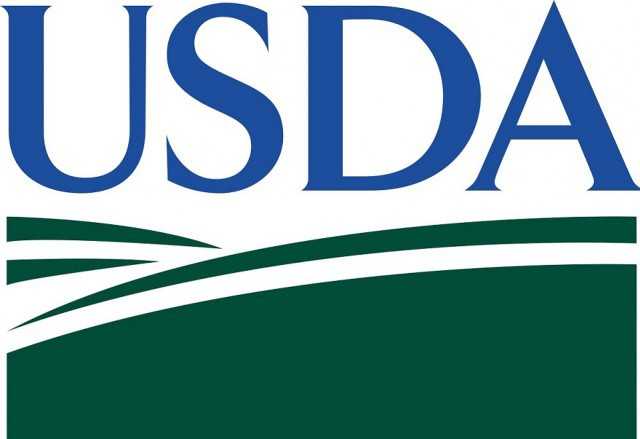WASHINGTON D.C., USA – The United States Department of Agriculture‘s Foreign Agricultural Service released on Thursday the World Markets and Trade report including data on U.S. and global trade, production, consumption and stocks, as well as analysis of developments affecting world trade in coffee. World coffee production for 2023/24 is forecast 4.3 million bags (60 kilograms) higher (+2.5%) than the previous year to 174.3 million.
Higher output in Brazil and Vietnam is expected to more than offset reduced production in Indonesia. With additional supplies, global exports are expected up 5.8 million bags to a record 122.2 million primarily on strong shipments from Brazil. With global consumption forecast at a record 170.2 million bags, ending inventories are expected to remain tight at 31.8 million bags.
Brazil combined Arabica and Robusta harvest is forecast up 3.8 million bags to 66.4 million in 2023/24. Arabica output is forecast to improve 4.9 million bags to 44.7 million. In January 2023, coffee trees in top growing region Minas Gerais experienced higher than average rains during the fruit development stage that caused difficulties for some growers in controlling plant diseases and pests.
However, increased precipitation resulted in coarser and heavier beans compared to the last crop, which contributed to production gains.
Although output is expected to expand, this quantity is below previous crops that peaked at nearly 50 million bags. Arabica trees in many growing regions continue to recover from severe frosts, high temperatures, and below-average rainfall that occurred in 2021 that lowered coffee production in 2021/22 and 2022/23.
Following 6 years of expansion, the Robusta harvest is forecast to decline 1.1 million bags to 21.7 million as reduced rains and cooler temperatures leading up to the flowering stage lowered yields in Espirito Santo, where the vast majority is grown. Coffee bean exports are forecast to rebound 8.0 million bags to 41.0 million, fueled by higher supplies and an expected stocks drawdown.
Vietnam production is forecast to rebound 1.6 million bags to 31.3 million due to higher yields attributed to favorable weather. Cultivated area is forecast unchanged, with nearly 95 percent of total output remaining as Robusta. Bean exports are forecast to decline 1.5 million bags to 24.5 million, with output gains boosting ending stocks to 2.7 million bags.
Central America and Mexico coffee production is forecast nearly unchanged at 17.9 million bags, with Arabica accounting for 95 percent of total output. Modest gains in Honduras, El Salvador and Costa Rica are expected to offset a slight dip in Guatemala. Bean exports for the region are forecast nearly flat at 14.7 million bags on steady shipments to top markets.
Colombia Arabica production is forecast up 300,000 bags to 11.6 million on slightly higher yields. Despite rising, yields remain nearly 15 percent below normal because growers limited fertilizer use due to its price spike. Bean exports, mostly to the United States and European Union, are forecast up just 100,000 bags to 10.9 million as supplies remain tight.
Indonesia combined Arabica and Robusta harvest is forecast down 2.2 million bags to 9.7 million. Robusta production is expected to drop 2.1 million bags to 8.4 million. Excessive rain during cherry development lowered yields and caused sub-optimal conditions for pollination in the lowland areas of Southern Sumatra and Java, where approximately 75 percent is grown. Arabica production is seen dipping slightly to 1.3 million bags. Bean exports are forecast to plummet 2.5 million bags to 5.2 million on sharply reduced supplies.
Ethiopia Arabica production is forecast nearly flat at 8.4 million bags and remains the world’s third-largest Arabica producer behind Brazil and Colombia. Yields have been stubbornly stuck around 14 bags per hectare while other top Arabica producers average yields that are 40-60 percent higher. Improved crop management practices have not been widely adopted because 95 percent of production occurs on non-commercial plots typically onehalf hectare or less.
Few non-commercial growers are interested in incurring investment costs due to the informal nature of their growing method, while commercial growers note that 5 to 10 years are needed to realize a return on their investment. Yields are also low due to limited use of fungicides despite the presence of coffee berry disease, coffee wilt disease, and root rot disease. Bean exports are forecast unchanged on stable supplies.
India combined Arabica and Robusta harvest is forecast to decline 400,000 bags to 5.8 million. Robusta production is forecast to drop 300,000 bags to 4.6 million due primarily to a prolonged dry spell from December 2022 to March 2023 which was followed by poor pre-monsoon rains.
Arabica production is seen slipping 100,000 bags to 1.2 million. Bean exports are forecast up just 100,000 bags to 4.3 million on a slight inventory drawdown.
European Union imports are forecast up 3.0 million bags to 47.5 million and account for 40 percent of the world’s coffee bean imports. Top suppliers in calendar year 2022 included Brazil (35 percent), Vietnam (22 percent), Uganda (7 percent), and Honduras (6 percent). Ending stocks are expected to rise 500,000 bags to 13.1 million.
The United States imports the second-largest amount of coffee beans and is forecast to gain 2.5 million bags to 26.5 million. Top suppliers in calendar year 2022 included Brazil (31 percent), Colombia (19 percent), Vietnam (10 percent), and Guatemala (6 percent).
Ending stocks are forecast up 1.1 million bags to 6.8 million.
The report also revised the following figures for 2022/23.
World coffee production in 2022/23 is lowered 2.7 million bags from the December 2022 estimate to 170.0 million.
- Colombia is 1.3 million bags lower to 11.3 million due to excessive rain and cloud cover that lowered yields.
- Honduras is reduced 600,000 bags to 5.4 million as coffee leaf rust lowered yields by more than expected.
- Peru is down 600,000 bags to 3.6 million on reduced labor availability during the harvest.
Indonesia is raised 500,000 bags to 11.9 million on higher yields.
World bean exports are raised 400,000 bags to 116.4 million.
- Vietnam is raised 1.5 million bags to 26.0 million on higher-than-anticipated stocks drawdown.
- Indonesia is revised up 1.1 million bags to 7.7 million on higher exportable supplies and sharper stocks drawdown.
- Colombia is down 700,000 bags to 10.8 million on lower exportable supplies.
- Peru is 600,000 bags lower to 3.5 million on reduced exportable supplies.
World ending stocks are revised down 2.5 million bags to 31.6 million.
- Vietnam is down 1.3 million bags to 1.7 million on stronger-than-anticipated exports.
- Japan is lowered 700,000 bags to 2.3 million on reduced imports.

















